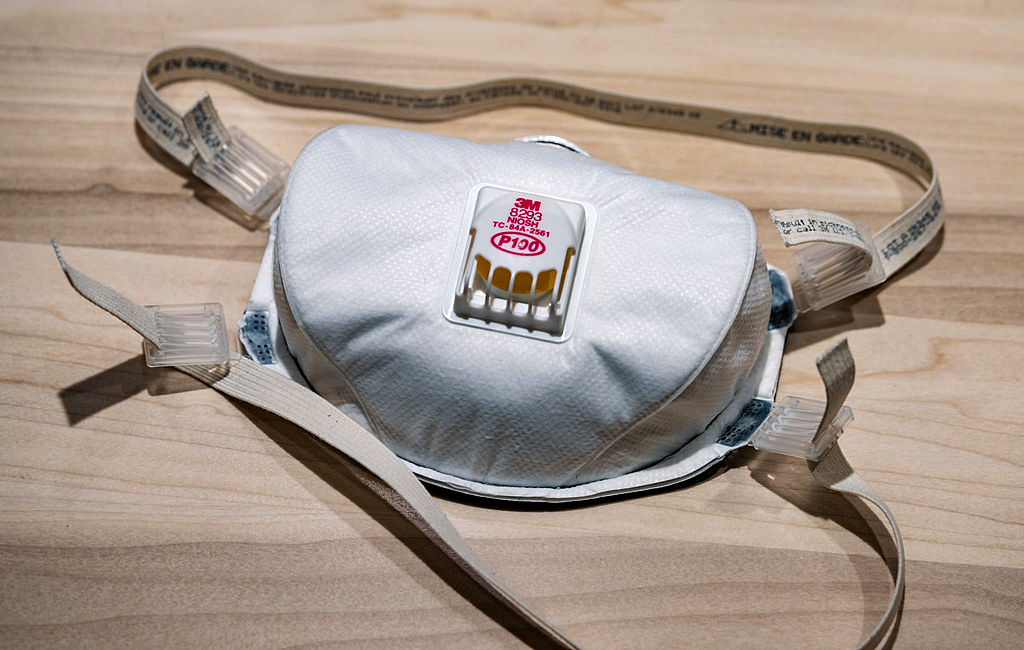UNC Research Points to N95 Mask Efficiency
Posted on Aug. 31, 2020
Data from infection prevention experts at UNC Medical Center show that reused, sterilized N95 masks and very out-of-date N95 masks retain their effectiveness at protecting health care workers from COVID-19 infection. (Creative Comons photo by Tony Webster)
Last spring, due to limited national supplies of N95 face masks, hospitals across the country asked public and private companies to donate personal protective equipment, including many types of masks, to be sure health care workers were protected while caring for patients.
With so many options, infection prevention experts at UNC Medical Center set out to gather evidence on the fitted filtration efficiency of dozens of types of masks and mask modifications, including masks sterilized for reuse, expired masks, novel masks sourced from domestic and overseas sources, and homemade masks.
Their data, published last week in JAMA Internal Medicine, show that reused, sterilized N95 masks and very out-of-date N95 masks retain their effectiveness at protecting health care workers from COVID-19 infection.
To assess mask fitted filtration effectiveness, Emily Sickbert-Bennett ’00 (’02 MS, ’10 PhD), director of infection prevention at the medical center, and colleagues turned to someone she knew she could trust: her dad, Dr. William Bennett, professor of medicine, who leads the Mucociliary Clearance and Aerosol Research Laboratory at UNC’s Center for Environmental Medicine, Asthma and Lung Biology.
“I told him we had two types of masks — used, sterilized and expired N95 masks — and we needed to know whether they would offer safe and effective protection, in case we needed our health care co-workers to use them.” Sickbert-Bennett said. “And he said it would be possible for his lab to test them and give us data upon which to base our decision-making.”
Researchers teamed with the EPA Human Studies Facility on campus to measure the fraction of submicron particles that penetrate into the breathing space of subjects wearing a mask while performing a series of tasks that simulate conditions such as speech and movement during a work shift. Such tests provided infection prevention leaders quantitative data they used to rank the best respiratory protection options for health care personnel during the COVID-19 outbreak.
The researchers found that certain N95 masks — as rated by the National Institute of Occupational Safety and Health Administration — provide greater than 95 percent effectiveness at keeping the wearer from inhaling airborne particles that may carry SARS-CoV-2, the virus that can cause COVID-19. These masks retain such effectiveness many years beyond the masks’ expiration dates, and the NIOSH-rated masks can be subjected to sterilization with hydrogen peroxide or ethylene oxide without compromising their efficiency.
Their fitted filtration procedures also showed that surgical masks with ties were about 70 percent effective at filtering their inhaled particles, while surgical masks with ear loops were about 40 percent effective. Research Assistant Professor Phillip Clapp ’04 (’18 PhD), co-first author of the article, noted: “One of the keys to protection is how snug a mask fits. An N95 mask that forms a tight seal offers the optimal infection prevention. However, evidence from previous studies suggests that even the surgical masks with less than 95 percent efficiency are effective in preventing acquisition of epidemic coronaviruses.”
“To date, UNC Health has maintained adequate supplies of NIOSH-approved PPE,” Sickbert-Bennett said. “We feel confident we can maintain protection of the UNC Health workers with the variety of face masks and respirators tested as part of this JAMA-published study.”
